Inoyama Land, "Glass Chaim" (Pedro Vian Edit)
What was that about?

Did this week make any sense to you? Or did you spend it in a constant state of incredulity, not quite believing what you saw but not exactly surprised by it either? Did you stare at your screen and shout out loud, “Why are you like this? Who told you you have to be like this?” Did you spend more time than you needed to wondering why everyone on social media doesn’t hate themselves as much as you? (Hate them and yourself?) Did every single thing that happened make you feel like you and the world were constantly moving alongside each other in an endless dance marathon of crazy? Well, I have three bits of good news for you: 1) You’re not alone. 2) You were right to feel that way. 3) The week is almost over. As for what the future holds, let’s just hold onto “the week is almost over” for as long as we can, because, well, oh boy. Now here’s something pretty that I hope you will enjoy.
New York City, April 26, 2017

★ Plant matter had clogged the drain in the middle of the plaza, leaving a deep sheet of water for unwary commuters heading out. The returning rain was no more than annoying. It went away again, leaving humid but tolerable walking conditions, save for treacherous leaking from scaffolds. Later, in search of one last way to be mildly unpleasant, the moisture would gather into a hard-blown drizzle.
Crabs Carpet Cuban Carpaths
It’s like ‘Planet Earth’ but with classic cars.
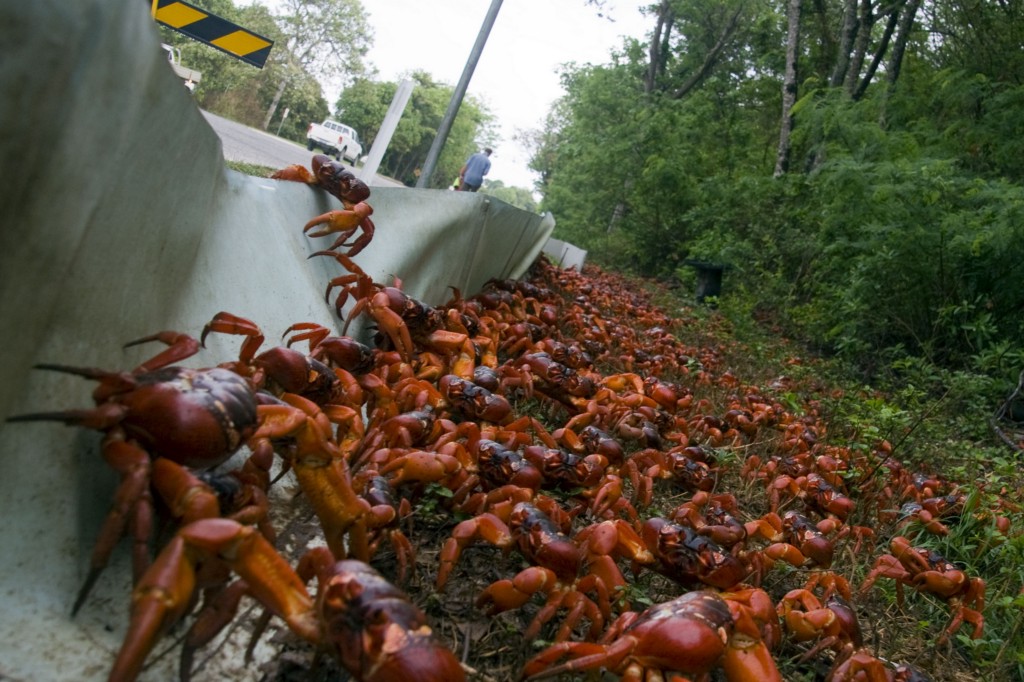
At dawn and dusk they emerge, scuttling sideways toward the sea, climbing up house walls and carpeting the coastal road that curves around the bay. The stench of crushed crab fills the air and their sharp shells puncture car tires.
…
As cars speed by, some swerving to avoid the 10-legged crustaceans, the cracks of carapaces zing through the air.
Someone had a lot of fun writing this. Click!
Ten Things That Have Come Out Of My Mouth About The "Ten Bands" Thing On Facebook
One of them is a lie.

1. Wow that ten bands I have seen one’s a lie thing is so weird I don’t really get it and I don’t want to and even thinking about it makes me wish I was born like 10,000 years ago.
2. Every time I see that someone I know has done this meme I read the words/names of bands and feel like someone just wrapped my entire head in gauze and I am floating in space but not in a fun science fiction way or even a wow life is a strange hard journey Gravity way, more like the way in which space is vast and impersonal and if I screamed into it “Why is this ten bands thing even a thing?” no one would hear me.
3. Wait, I’m supposed to just know, based on the force of all of your amazing, unique personalities, which band you listed that you actually never saw? Is that it? I don’t know if I understand the feelings or insights that would go with making an assessment about Which Band You Have Not Seen.
4. Thanks for explaining it to me. I am sorry I fell dead asleep while you were talking. Please don’t take it personally. Do you have any Bourbon?
5. Ok. Here goes. “Journey, Fleetwood Mac, Die Antwoord, The Dixie…” — Oh my God I just had a terrible dream that I was doing the list but that wasn’t the worst part — the worst part was I was actually still alive.
6. What about this meme: “Ten photos of elderly blue heelers, in a 100 mile radius from Nevada City, CA, sent to me by Pet Finder, which are actually obviously mostly Pit Bull — one of them is actually mostly Blue Heeler?” Who wants to play that?
7. Can’t you just tell me which band you didn’t see?
8. Could it be that my moment of maximum internet hatred arrived?
9. Is Iggy Pop going to run a Masterclass on coming up with your perfect “foil” band? Should I attend and see if these type of posts no longer make me want to take my own life? If Iggy Pop sings a song in the class, might I add him to my potential nine “actually seen” concerts? Or should I plug my ears so as to not unnecessarily shorten my list of potential “no not really folks, lol” bands?
10. When people write, “Alright, I’ll play!” are they generally feeling resignation or excitement? Why are more people writing this phrase before this meme than other ones? Is it like “Alright, I’ll play, that sounds fun?” or “Alright, I’ll play, the world now officially blows hard enough for me to engage in this idiocy?”
Anyway, I didn’t really say one of these things. Can you tell which one it is?
1,001 Birdhouses for $10,000
The story behind an unusual Craigslist posting

The definition of ‘outsider art’ is a loaded one. It is broad enough to include art by autodidacts, art by the institutionalized, and contemporary ‘folk art’ by communities that don’t slot neatly into The Met’s indigenous categories. Sometimes, it’s art that looks more like crafts.
If you’ve been to Hudson, New York (you know, upstate) you’ve seen the art of Earl Swanigan, the town’s outsider artist in residence. Earl literally sells his art outside, lining the sidewalk with flat planes of anthropomorphized animals on repurposed construction boards. And though he is now listed on Artsy and 1stdibs (with the outsider angle played up, of course) a better metric of Earl’s success is that Hudson simply wouldn’t feel like Hudson without him.
Outsider art couldn’t exist without insider art, or art deemed worthy of art criticism. (For a crash course in that, see Tom Wolfe’s The Painted Word.) Vulture critic Jerry Saltz calls the outsider label an “outmoded discrimination.” You might have heard the sad story of Inuk artist Annie Pootoogook’s untimely death at 47 in 2016. Pootoogook, winner of Canada’s Sobey Art Award for young artists, depicted the realities of contemporary Inuit life. If she was considered an outsider, it was only because her community has been forced to the social margins. Writing of Pootoogook in 2006, Toronto-based critic David Balzer said that the association of Pootoogook with the outsider cannon was “an often cynical and exploitative designation that could belittle the legitimacy of her talent.”
I resent the term outsider and wish we had something better to describe art made outside the slick cogs of the art industry, the workings of which most Americans won’t be exposed to in their lifetime.
A year ago, I decided that if I wanted to understand how the average person views art I should look to the Craigslist arts+crafts listings. I’ve spent many hours scrolling through baskets of yarn, carved table legs, and muddy impressionist landscapes. So I certainly sat up and took notice when I saw Heikki Jaason’s listing of 1,001 miniature birdhouses for $10,000.
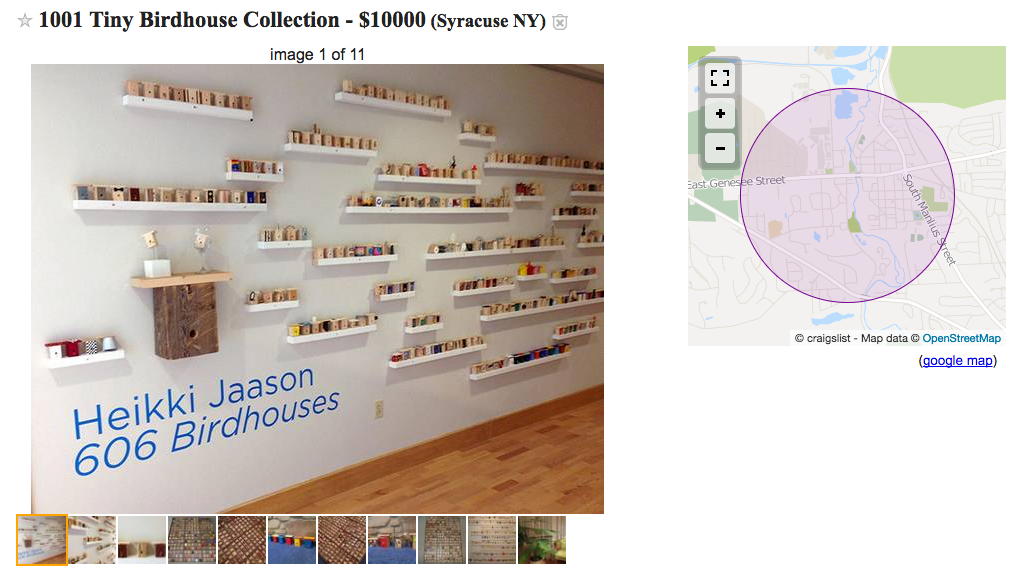
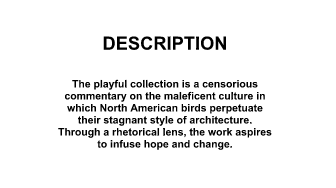
Jaason is Estonian-Canadian and created the collection in his thirties. He’s exhibited it at two galleries, View in Old Forge, New York in 2015 and Capacity 3 Gallery in Guelph, Ontario from 2015 into 2016. Each house has a theme, ranging from Tim Horton’s to Dog Hair. These 1,001 themes are compiled in a single document. I reached Jaason by phone to talk about the scale of his undertaking and whether he’s really ready to part with it.

Where were you when you undertook this project, and over how long of a period?
HJ: I was living on a farm in Ontario. The dwelling that I had there was quite small, it was about 400 square feet. I guess you could call it a tiny home. I just fixed it up when I bought the farm then I lived there for a couple years and it’s currently rented out. It was a good chance to experience life on a smaller scale with a smaller footprint, and I realized how little space we really need to get by. That sort of inspired me on some level to create a really small birdhouse collection. I think it was over the course of a couple of months that I got to 606 pieces and then I took a year off or so to go to Europe and when I came back I ended up completing the remaining pieces to get to 1,001.

What is your vocation? I know that is a loaded question.
HJ: I’ve done lots of different things, most recently I was teaching for quite a while as an elementary teacher and then prior to that I was working as a university administrator for a number of years. I’ve been back and forth through school pursuing different degrees of interest and studied in Europe for a couple of years. I just enjoy being in a learning environment and I really thrive on having a lot of variety in my life so I like to pursue things for as long as I am inspired by them. When I started doing this art project it just sort of evolved organically.
Were any of those degrees in art?
HJ: No. My mother studied art formally and has done an incredible amount of painting. My uncle (her brother) had a gallery in Soho where he focused on American Primitive Art. So I’ve been exposed to this idea of “outsider art.” I don’t consider myself an artist, but I think I’ve created something that people would consider art and it challenges the definition of who an artist is and what art is. Maybe when I end up selling it I’ll think of myself a little bit differently.
How did you decide on birdhouses? You really committed to birdhouses for a while there.
HJ: I think so many of us have experience building a birdhouse and it’s really accessible for people. I built a larger house and then I built a couple of miniature ones and once I found a source for reclaimed materials I thought it was a great chance for a more ambitious project. It was just the creative outlet I needed at that period in my life so I would devote an hour or two in the evenings, and then once I settled on a larger number I became a little more obsessive. I was getting a lot of positive feedback from friends and family and other people who had seen it and that encouraged me to continue, for better or worse.

It would be great to sell it at this point. It would be great validation for what I’ve accomplished, though it’s a little sad to part with something you put so much time and energy into. But as long as I’m holding onto it, I’m still compelled at times to create a few more. Then it will start getting larger and it will become another obsession so it will be nice to wrap everything up and have everything finished and move on to the next thing.
So you went to Home Depot like “give me all your scraps!”
HJ: No, I was fixing up my farm and I noticed they had these little shims under the lumber they sell and I would see them on the floor. They said they just end up recycling them or turning them into mulch so I asked if I could have a couple. I knew another place in the area that was a roofing company that had lots of scraps so I just started grabbing stuff from there. It was just an assembly line construction at one point.
I was really interested by your tongue-in-cheek artist’s statement. Did you study other artist’s statements to write that?
HJ: Often times people will ask what my background in art is, implying that I needed to have a background in art in order to do this, or for people to take my work seriously. I always try to avoid answering that question. I recognize that I’m really perfectionist about some things, and maybe that’s an example of taking things too seriously, but when I look at how people talk about fashion or art I think they are often taking it too seriously. With anyone that creates things, the objective is to get it in front of as many people as possible so people can appreciate it or be inspired by it. My birdhouses are a very superficial collection in that there is no real deep message. It’s more just something to look at. I threw a lot of buzzwords into that statement.
Do you have a favorite theme that you came up with for the houses?
HJ: If I could keep a handful for myself, I wouldn’t have a problem picking out a bunch. When someone comes along and wants to view the collection, I’m always excited to see pieces I forgot I created. People have asked about buying single pieces, and while it was exciting that they were interested I was reluctant to sell them individually because I see value in the whole collection.
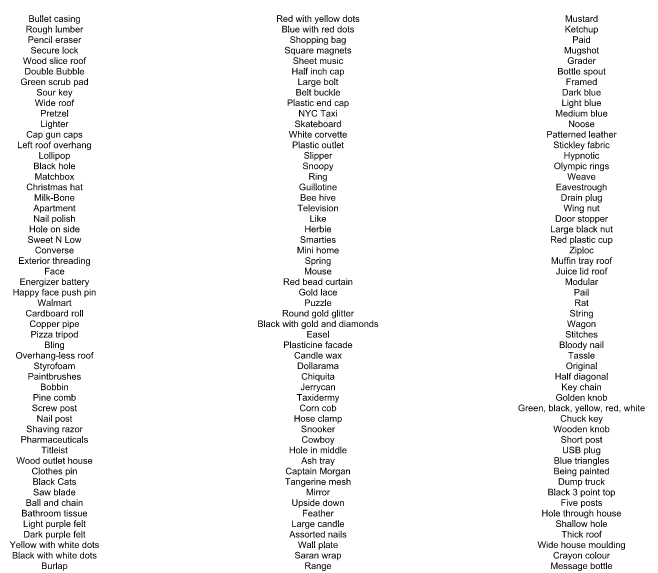
People would have their favorites, and I would hate to sell the favorites and have others left behind. It’s a fairly broad set of themes. When I display them I display the child-focused themes on the lower shelves so that kids can see them. And there are some that have more mature themes (like Playboy) so I put those higher up. I really hope someone comes along with a good idea for displaying it, it will help pay for life.
Life is so expensive. How long have you been considering selling this? How did you come up with the price?
HJ: I think I had it listed on Craigslist a couple of times. It expires so quickly and I’m not actively selling it. Craigslist is simple. I mean, it’s not a place to sell art. I asked different people about the price and what they think it might be worth and I got a whole range of suggestions so I decided on 10,000, essentially $10 per piece.

How many inquiries have you gotten via Craigslist?
HJ: Maybe 20 or 30 I think the price probably weeds out people who aren’t serious about it.
Would you ever do a project like this again?
HJ: I’d certainly consider it. It depends on how this one ends. I’ve wrapped it up really well, everything is documented, everything is spellchecked everything is fixed and in good order and stored away so it can sit there for years in those boxes and nothing will happen to them. I still have a lot of loose ends right now in my life so it will be nice to get things wrapped up.
Would it upset you if I told you I found a typo in your document?
HJ: Yeah, it would upset me a little bit—not a lot. I went through it painstakingly. If there is something you found, I wonder if it’s a British vs. American spelling.
No no, I know all about that.
HJ: Well I would love to know so I can fix it.
Page 2 column 3
HJ: I’m impressed that you found that.
I’m very thorough. Do you feel like you have closure on this project?
HJ: I do.
So is part of listing this on Craigslist kind of like sounding a yawp into the universe that it exists?
HJ: I think that’s exactly it. I keep a very low profile on the Internet– hence, Craigslist. Maybe if I was on Twitter it would be easier to be picked up or liked or whatever happens there. I’m confident that there is at least one person out there that would love to have this and I’m not in a hurry at this point to find that person so if it happens, or when it happens, it will happen.
But you kind of don’t want to find them either.
HJ: Yeah, I’m sort of torn.
This interview has been condensed. You can get in touch with Heikki Markus Jaason at forsaleinfayetteville@gmail.com.
I'm So Fucking Sick Of Food
Why aren’t you?

According to Bloomberg, it’s taking over my life:
All these stories are part of the same phenomenon. As my colleague Tyler Cowen recently wrote, food — and, I would add, the business of food — has become central to contemporary culture. Filling a primal physical need turns out to be a perfect match for the digital age. The question is why.
I don’t really care why, because it’s pretty obvious: food is a human universal, so basically everything that humans have come up with to focus their energies on as a distraction before death (entertainment, television, socialization, gossip, news, retail, business, technology, photography, health, fitness, etc.) has an application to food. I mean really, just look at this tweetstorm. Food touches everything, and everything touches food.
I have always loved food for its absurdity. Everyone talks about food like “food is ephemeral.” No, not really—food doesn’t go away when you eat it. Food goes through your gut, where it gets leeched for nutrients, and then turned into literal shit. We are not open enough about this: food is a fucking tragicomedy. You literally ruin food with your body. What a powerfully gross thought! Humans are just CRUSHING bacon and unicorn milkshakes left and right. We don’t talk enough about what a disgusting miracle food is. I love it.
But I’m also really fucking sick of it. When I worked at The New Yorker, I used to write restaurant reviews for the teeny tiny section at the front of the book called “Tables For Two.” It was a great gig because I got to dabble in “the food scene,” which in 2009 was HOPPIN’. My colleagues and I were constantly bantering about have-you-tried-this and you-should-go-here. (I understand that “restaurants” are a non-distinct spoke on the Great Wheel of Food, but bear with me here.) Our boss would always look at us like we were aliens for obsessing over this stuff. Shouldn’t young people be out doing drugs and having sex and going to rock ’n’ roll shows? No, we explained. THIS is our sex, drugs, and rock ’n’ roll. Chefs are our rockstars, bespoke cocktails our drugs, and gut-busting meals our sex.
But like all cultural obsessions, the novelty wears off. I don’t really care about chefs qua chefs beyond the fact of them being interesting or captivating people, and restaurants close for zillions of reasons that almost never have to do with whether the food is good. Every restaurant and TV chef has a cookbook, and every cult donut has an Instagram. It’s all so symbolic and notional. We’ve gone through so many taste and trend cycles and frankly I’m feeling a bit nauseated. If I had more time and energy I would make you a chart of all the phases, like bacon and bourbon, and tacos and banh mi, and so on. And yes, I know: it was ever thus—there have always been food trends. Short ribs were long over by the time I moved to New York. But isn’t there something a little hopeless and desperate about literally dyeing food in rainbow colors? Have we run out of possibilities and combinations that we now have to make our food seem technicolor and otherworldly? We’ve turned food into an economic consumption item, and food-as-product is developing at an exponential rate.
Trends like “clean eating” and “eating raw” and products like Soylent obviously come from a place of wanting to change how we eat, which unfortunately isn’t really all that hackable—the body wants what it wants and needs what it needs to survive. Humans evolved to like hot, cooked food, and animal proteins (arguably both things that made humans what they are today). But that doesn’t mean they have to or even should, because the path of evolution is neither a value judgment nor a proscription. Deciding how and what to eat has become a real fucking downer, and I guess I applaud people trying to come up with solutions for having any hope, but I’m not convinced there’s only one religion when it comes to food.
Ultimately food will always haunt us, now that we know enough about it to discuss it and analyze it and manipulate it to death. How do you get kids to eat X? How do you make sure you get enough Y? Why is organic Z so expensive? Food is the ultimate modern topic—it’s practically a divinity (also itself a food). It is humanity’s albatross. We are doomed to wonder about food as long as we shall live and this is what makes us human. I’m sick of food, which is not to say that I’ve lost my joy for it; it’s just that I’ve lost my joy for your joy for it.
Khachaturian's 'Masquerade Suite' Will Drive You Insane (In A Good Way)
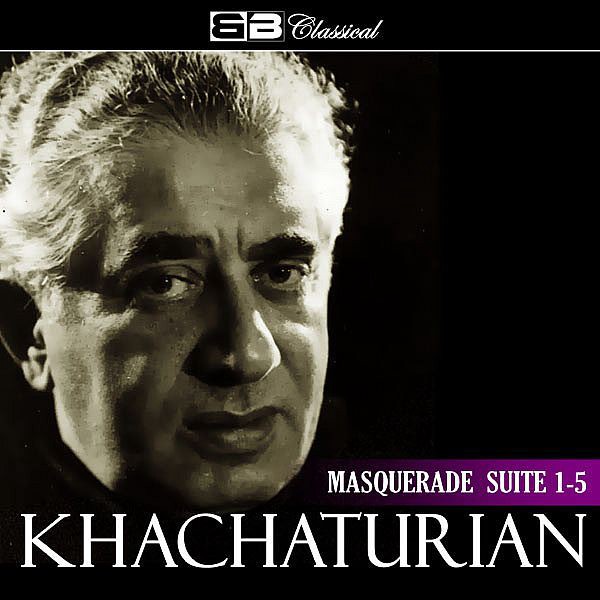
Back in December (remember December? I don’t), longtime friend of the column and Brooklyn-based filmmaker and writer Caroline von Golum sent me an email with some listening recommendations, including but not limited to Khachaturian’s Masquerade Suite. Do you know Khachaturian? You almost certainly do, because it’s likely that at one point in time, your middle school/high school/local pops orchestra/an old film/childhood cartoons/something else subjected you to Sabre Dance. “Ohhhhh,” you’re saying now, but don’t feel bad, because that was my only reference point for Khachaturian for far too long.
Aram Khachaturian was born in 1903 in present-day Georgia to an Armenian family. He’s the most famous and widely celebrated Armenian composer, though he did almost all of his work in the Soviet Union and is largely acknowledged as one of the most prominent Soviet composers, along with our two old friends Prokofiev and Shostakovich. Khachaturian was also regularly praised by the Soviet government, and he held the position of the Secretary of the Union of Soviet Composers until his death in 1978. (“Hmmmmmm, is this a good or bad thing?” I asked myself while reading, and I still do not know the answer to the question.)
As I said above, the work in question this week is his Masquerade Suite for which I’m referencing this recording by the R.C.A. Victor Symphony Orchestra in 1958. No Bernstein? No, shut up. This is one of the best recordings of this suite. So, sorry, anyway: the Masquerade Suite was written to correspond with a play by the same name by Mikhail Lermontov, which, for lack of a better metaphor, is basically like the Russian version of Othello. A rebellious spirit in high society who winds up murdering his wife for a bad reason. Damn, I love when violence against women is a major plot point in a character’s self-discovery. 🙂
Anyway, a frame of knowledge of the play version of Masquerade isn’t too necessary beyond the first movement of the suite, the Waltz. The Waltz is most often played on its own from this suite because, well, as you’ll grasp from the opening seconds, it really stands for itself. It’s weighty, boisterous, and energetic; it’s a heavy and borderline militaristic waltz. There’s a line in the play from Nina, the soon-to-be murdered wife, when she hears this waltz: “How beautiful the new waltz is! … something between sorrow and joy gripped my heart.” Which was a challenge to hear and conceptualize, you can imagine, if you’re a creative type. You have to write something that corresponds to a line that you’ve created a new and brilliant thing, as if the stakes aren’t already high enough. What we do get, in fact, is something that does waffle between sorrow and joy. We know it’s a waltz, obviously, from name alone and the sound of it, but it isn’t a free-spirited or particularly joyful dance. I’m loosely reminded of the fourth movement of Tchaikovsky’s Fourth Symphony here, which boldly combines folk music with a slightly more modern energy.
Its following movement, Nocturne, dips into the serene, featuring a prominent violin solo. This is an all-around beautiful piece of music: wistful and pristine, with a clear and rich melody. Listen around the 1:54 mark when the French horn backs the violin providing colorful support to the core theme. Nocturnes, at large, of course, are inspired by night (“Fucking duh,” you’re hissing at me; look, I know), and this movement of the suite serves as the most soothing as it edges into dusk.
Nice try, though, if you think you’re heading into something else calm and composed because then we have the Mazurka. A mazurka is a Polish folk dance in a triple meter with strong accents placed either on the second or third beats. What this means, in layman’s terms, is, okay, bear with me: A waltz is a dance in a triple meter with the accent placed on the first beat. OOM-pah-pah, OOM-pah-pah, in vaguest terms, is what a waltz sounds like. If you’ve forgotten, just go back to the first movement here and you’ll catch it. So a mazurka puts those heavy accents on a different beat: oom-PAH-pah or oom-pah-PAH. What the hell? Correct. Think of a mazurka as kind of a deranged waltz, and well, then you’ve got this third movement in the Masquerade Suite.
Not unlike Copland’s Rodeo Suite — a five-movement piece of music that alternates between dances and slower pieces — Masquerade Suite’s fourth movement is a Romance. And what a romance it is for me, mainly, because there’s a gorgeous melody from the cellos around the 40-second mark that I just love. The Romance feels as if though it has a bit higher stakes to this movement than, say, the Nocturne, peaceful and slow. This has the drama to it — the wailing strings, the pleading woodwinds. He kills his wife in the play, remember? Okay, that’s enough.
And then, Masquerade Suite and Khachaturian have the sheer fucking audacity to go out on a Galop, a dance named for — I bet you can guess without me telling you but — a gallop. I’ll be honest: I got to this movement and I immediately burst out laughing and restarted it over. It’s so jarring and strange and unhinged. What???? Is this??? I was like, oh, of course this guy wrote Sabre Dance. Everything of his has that tinge of madness clearly present in Sabre Dance. If you’ve listened to this whole suite wondering where some really wild brass parts have been, let me tell you, this is your movement. It’s a wooden rollercoaster of a piece. A rodeo clown. So deliberately funny and wild. Imagine some clapping emojis here: listen to those crash cymbals. I love it! And then midway through, it all disappears as the clarinet and then the flute creep through for one final refrain before the melody bursts back in again. It’s the kind of suite I want to shove in the face of someone who still manages to pretend classical music is dull. Every part of the Masquerade Suite is as wild and evocative as music ought to be.
Fran Hoepfner is a writer from Chicago. You can find a corresponding playlist for all of the pieces discussed in this column here.
Superpitcher, "Howl"
When are you not howling at this point?

Midway through the latest installment of Superpitcher’s ongoing Golden Ravedays project there is a good deal of howling that happens, so if you are listening somewhere in the presence of other people you might want to consider headphones for this one. Unless the other people around you are howling anyway, which, given everything that is going on these days, seems more likely than not. It’s all howls from here on out. Anyway, enjoy.
New York City, April 25, 2017

[No stars] The choppy wind sent the usually smooth downward flow of the fountain scattering sideways at erratic angles. The scaffolding company’s sign was half down and dangling. Downtown, fat white drops were blowing heavily enough outside the station exit to force a retreat under another scaffold. A few minutes later the rain was endurable, and for a while in the middle of the day it had stopped entirely. Eventually, though, it was pounding down again. The rush hour mist and rain blotted out the Freedom Tower so completely there was no way to get a good fix on where it was even supposed to have been. Uptown, umbrellas were turning inside out.
What Do Germans Think of the Juicero?
Deutschland über us (now almost as strong as two human hands).

Despite the recently accepted honor of most important country in the world, Germany is a small place. Geographically, it is not even the size of Montana; its population (80 million very stern people) is about twice the size of California. At the same time, German speakers are very obsessed with the news: in parts of Germany and all of Austria, for example, the $7 price of a cup of coffee at a Kaffeehaus is justified because patrons can sit and nurse that coffee for ten hours while they read literally every single page of every single newspaper to which the Kaffeehaus subscribes precisely for that purpose. The result? When they run out of their own news (which they always do), Germans and Austrians keep up with news from all over the world — even when (prepare to spit out your breakfast cupcakes, Amis) that news doesn’t necessarily concern them.
And this means that even in a week when the Head Debutante of the West Wing shows up at a German women’s event and touts her daddy’s agenda (and gets reacted to extremely appropriately), there is still space in the German press for the most pressing issue in the world. (That was a pun, which is a German’s favorite method of humor, which is why Heidegger is so hilarious.) And the reason for the employment of that pun (explaining jokes is a German’s second-favorite method of humor) is that the German press still managed to weigh in on a certain American press…a juice press, that is. (GET IT? TWO USES OF THE WORD “PRESS.”)
What, pray tell, does the Teutonic media have to say about a certain $400 wifi-enabled kitchen gadget, one that squeezes juice out of pre-packaged packages of slightly thicker juice, with a unit of force that only people in Silicon Valley are meant to understand (despite it sharing a name with an actual unit of scientific measurement that measures something entirely unrelated to fruit juice) — a unit that, it turns out, is roughly equivalent to slightly less than the gripping power of two journalist hands? HAS THE JUICERO MADE THE GERMAN NEWS? HAS IT? HAS IT? HAS IT?
The answer is ja! First let’s check out jetzt (“now”), a Cool Young People’s Blog operated by the Süddeutsche Zeitung, aka the New York Times of Germany.

This headline translates, loosely, thus: “The hipster juice press is all out of juice,” with juice having the same double meaning here that it does in English, GET IT? Why they didn’t go with the double meaning of press, which is also the same in their language and given our own media’s evisceration of the contraption, don’t know, but there you have it. Literally what it says is closer to “[With] the hipster juice press, the juice is turned off,” which, if you say it to yourself in a thick German accent, is indeed very funny. The piece itself is, as German humor tends to be when not punning, sandpaper-dry:
Anyone who quickly checks their pocket calculator to see just how much a glass of this juice costs will probably come to the conclusion that even Til Schweiger’s Hamburg tap water (at EUR 4,20 a liter) is almost a bargain. On the other hand: Normal juice presses don’t have WiFi — the end-all be-all argument of the Juicero’s adherents.
The best things about this paragraph, other than its reference to a pocket calculator and sick burns on Tils, the ill-fated bottled water venture of sexy German actor-man Til Schweiger, is lost in translation: the German word for “juicer,” Entsafter (ent-ZOFT-ur) literally means “de-juicer,” which, of course, is much more accurate; and, even better, the German expression I’ve translated to “end-all be-all” is Totschlag-Argument (TOTE-shlog-ar-goo-MENT), the first word of which literally means “death blow,” something I am betting Juicero founder Doug Evans would like to deal to the valiant hand-squeezers at Bloomberg that first broke this story.
Meanwhile, the Osnabrücker Zeitung — the functioning local newspaper out of the small Saxon town of Osnabrück — dispenses with both subtlety and puns, and wonders, simply: “Is the Juicero juice press the most preposterous product of all time?”

The word I’ve translated as “preposterous” here is sinnlos, the primary meaning of which is “senseless,” which also happens to be the word Ludwig Wittgenstein uses at the end of the Tractatus logico-philosophicus to refer to all the propositions of philosophy, which he deems impossible to express in human language, rendering unto the entire discipline exactly the sort of futility one might grant the quest for fresh-pressed juice at a reasonable price.

The Osnabrücker may join the United States in the Fulbrightian exchange of mutual understanding and mockery of this device, but I think the Juicero could potentially crack the German market. Because Germans love juice.
They love juice so much that any full-grown adult can march to the bar of even the most debauched nightclub and order her grown-adult ass a glass of juice. What the bartender will gladly pour without batting an Auge comes from a tall bottle, the likes of which is available in an astounding variety of supergeilen flavors and colors from one’s local EDEKA, Aldi or Lidl. (The best of these flavors is the “healthy” Multivitaminsaft, or multi-vitamin juice, which is Sunny D for adults.)

All German juices are highly concentrated, and comparable in sugar content (added or natural) to your average Spider-Man sheet cake — which is to say, they are delicious, but not particularly refreshing, especially if one orders a single glass in an aforementioned establishment, and receives exactly one-fifth of a liter, in a little glass actually marked with a “0,2” and a line, to which the juice is filled to the millimeter. (METRIC SYSTEM.) This offering will provide the refreshment of a dose of DayQuil and cost $6.
So, what many Germans (and all Austrians) do to up both the quench quotient and value of their juices is spritz the everloving fuck out of everything. Traditional spritzing involves carbonated water, either bottled mineral water (which will cost another $7 but last a few more minutes) or seltzer, but one can also order a Kirschsaft auf ein halbes Liter Leitungswasser gespritzt (KERRSH-zoft owf ayn HOLB-us LEE-tur LIE-tungs VOSS-ur guh-SHPRIST), i.e. cherry juice “spritzed” with half a liter of tap water, the drink of choice of my Austrian buddy Michael, which I promptly coopted. During the summer months, all manner of alcohol is also gespritzt, especially in Austria, where the Weisser Spritzer (WHY-sur SHPRIT-sur), or white wine spritzer, is the de facto national drink.
All of this is to say that residents of the German speaking lands already have a cultural relationship to juice. HOWEVER. German speakers are also obsessed with natural health “remedies” of dubious proven worth, such as homeopathy, spa cures and shit-tons of direct sunlight. Fresh pressed juice, with its higher concentration of vitamins and nutrients (but same negligible concentration of fiber and hence sugar-bomb status), seems like the kind of thing Germans would be into. ARE THEY?
Evidence #1: The instagram feed of Frankfurt Fitnessblogger Florian Liebig (a.k.a. “Flooorrriii,” whose pronunciation is your guess as well as mine). Here, Flo shares both the recipe (sounds gross) and the results (“too much ginger”) of a recent glass of juice he made with his 104,000 followers. It has almost 4000 likes, which is unequivocal scientific evidence in favor of Team Saft.
Evidence #2: Berlin currently contains at least two dozen juice bars (one of which is called, amazingly, Funk You), which is still probably only 1/400th of its tanning parlors but surely outnumbers, say, the pay phone booths (RIP).

Evidence #3: Germans love expensive gadgets that do one thing, if they do that thing well: Every German kitchen has einen Wasserkocher, aka a “water-boiler,” or electric teakettle, whose water-boiling speed is their Audi to my 2000 Saturn (yes, I do drive a 2000 Saturn). Or Der Mixer, which is what Germans call a blender in their wonderful tradition of slightly-off appropriations of English. (Longdrinks=cocktails; Smoking=tuxedo jacket; Handy=mobile telephone, ha ha ha.) They even have their own somewhat Juicero-esque preferred maker of coffee: the Pads machine, which is sort of like a Keurig if it made delicious crema-style coffee instead of hot gravel swill.
As much, then, as Germans correctly retain a healthy skepticism of all things Silicon Valley (including Peter Thiel’s president and that guy’s lame liar daughter), I’m not a hundred Prozent convinced that their skepticism of this particular American press is warranted. All Doug Evans has to do is add a $700 wifi-enabled spritzing function.
